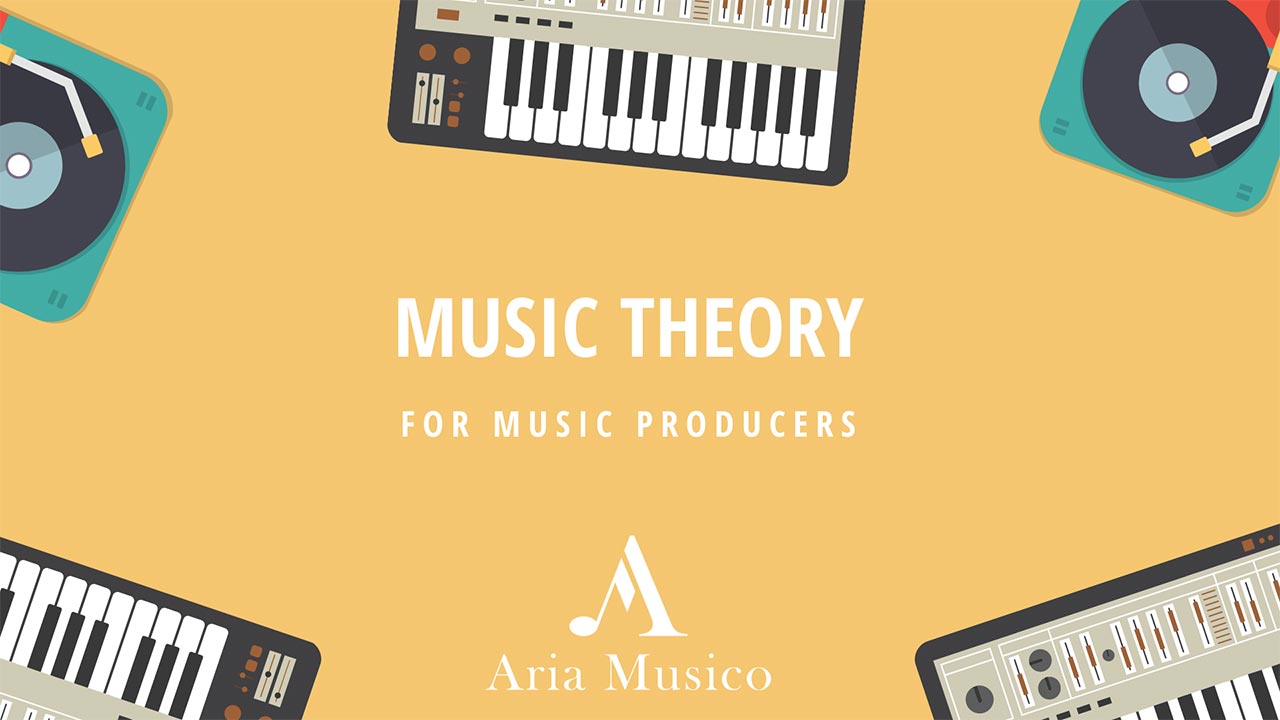
Music theory is a huge topic and there are plenty of aspects like scales, chords, notations, music charts, chord naming etc. that musicians must understand.
While understanding these concepts is easy, applying these concepts correctly on musical instruments like guitar, piano, violins, etc. requires a lot of practice.
Luckily for music producers, Digital Audio Workstations do the job of playing the correct notes as per the instructions given. The producers just need to understand and master the following 5 concepts of beat music theory to instruct the DAWs to play the correct notes:
• Understanding the music notes.
• Song Scales / Keys.
• Major and Minor scales.
• Major, Minor & Diminished chords.
• Developing chord progressions for original songs.
We have explained these music theory concepts in Ableton Live, but these are universal concepts and apply to any piano as well as the piano roll of any DAW.
We are also providing you with a simple ‘Music theory chart’ that will guide you to the notes of a particular major or a minor scale as well as the respective chords of that particular scale.
Click: Music theory Chart
The guide to using this chart is covered in the videos coming further in this post.
The best part about our tutorials is that you don’t need a piano, guitar or any musical instrument to master these concepts.
You can train yourself by downloading any of the free trials / free digital audio workstations that have a piano roll or download any free mobile application from the play store or the app store that has a piano.
In case you download a piano app on your mobile you will have to play the respective notes as shown in the videos to train yourself.
In this video, we will understand the notes of a piano roll as well as an actual piano with the following music fundamentals covered:
• Names of the white and the black notes of any piano roll of DAWs and an actual piano.
• Sharp (#) & Flat (b) notes
• Understanding Octaves.
• Tones and Semitones.
Watch Now
Every song follows a pattern that makes it sound, musically correct. These patterns can be described as song scales/keys. They can be major scales, minor scales, diminished scales and so on.
A simple guide for recognising these:
• Major Scales are used for expressing ‘happiness‘ and also widely used on songs where we require a ‘party vibe’
• Minor Scales are used to express emotions and you will observe that all those emotional songs are produced in minor scales.
• Diminished Scales express a kind of suspicion/horror and used in songs in which expressing such feelings is required.
We will focus on Major & Minor Scales that are widely used in western music and understand how we can train our ears for them.
A chord formed when a group of notes are played together to create harmony.
Chords add texture to a melody or vocals and also are used to provide a musical rhythm to a song. They are normally a combination of 3 notes called triads.
These chords can be of 4 types:
• Major,
• Minor,
• Diminished &
• Augmented
Major and minor chords are extensively used in western music.
We will now understand how we can determine the structures of Major, Minor and Diminished Chords using simple formulae.
We can easily layer any of the Major Chords using a simple 3-2 formula.
Watch the video to understand the application.
We can easily layer any of the Minor Chords using a simple 2-3 formula.
Watch the video to understand the application.
We can easily layer any of the Diminished Chords using a simple 2-2 formula.
Watch the video to understand the application.
Chord progressions are sequences of chords that lay a foundation for harmonies and help us build rhythms and melodies over them.
We can develop chord progressions using any 4 chords from a particular scale and make a full song using only those four chords.
Many of the worlds greatest hits have only used a simple set of 4 chords running from start to finish.
Alternatively, we may choose to have a different progression in different sections of a song.
For Eg:
If we choose to make a song on C major Scale,
We can have a progression:
C Major, A minor, F Major, G Major – for the Verses,
Then change the progression to:
C Major, F Major, A minor, G Major – for the Pre-chorus sections
& then again change it as:
C Major, E minor, D minor, G Major – for the Drop / the Hook sections
But even though adding different progressions in different sections add value to the feel of your song, it is not mandatory. The choice is completely yours, what feel you like and want to give to your songs.
Watch the video for practical application of developing a chord progression for an original song:
To Summarise:
It is important to understand the major & minor scale patterns and the chords of that particular scale and when we choose a particular major / minor scale for our original song, we have to ensure that we use only the ‘NOTES’ and ‘CHORDS’ of that particular scale only.
With this simple strategy, we can be sure that we will always stay musically right in our productions.
If you master and apply these 5 basic concepts of music theory correctly to your original songs, remixes or mashups, you can rest assured that you will sound 100% musically correct.
IMPORTANT RESOURCES FOR MUSIC ENTHUSIASTS:
Gain knowledge about music production. Access our Resources
Get started with our comprehensive music production courses: Visit our online music school and browse our course offerings